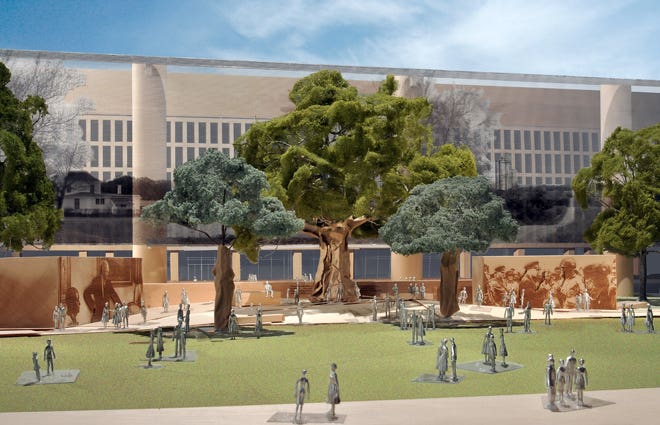
Clem Labine
DC’s Stealth Monument
If the Eisenhower Memorial Commission gets its way, construction will start this year on a gigantic monument to Dwight D. Eisenhower adjacent to Washington’s National Mall – in spite of fierce, growing opposition. Most prominent among those objecting are members of the Eisenhower family. However, in spite of -- or perhaps because of -- the mounting opposition, the Memorial Commission is determined to fast-track the highly controversial design.
Architect for this ill-considered memorial is Frank Gehry. Besides the Eisenhower family, opposition has come from a wide range of sources, including Architectural Record, the Washington Post, Foreign Policy, the Heritage Network, Better Cities, National Review, and Metropolis. They eloquently spell out many of the shortcomings in Gehry’s plan. But one of the most powerful reasons to call timeout on this misguided project is procedural: It has largely flown under the public radar and has attracted little rigorous scrutiny. The huge size of the tract (four football fields), its prominent position adjacent to the Smithsonian Air & Space Museum and major cost to taxpayers (over $100 million) should be reasons enough to say, “Slow down.”
The most determined and articulate opponent of Gehry’s design has been Washington’s National Civic Art Society. This organization has created a website delineating not only the many, many problems with the design itself, but also raising pertinent questions about the closed architectural “competition” that ended up selecting Frank Gehry as the winner.
In addition, the Civic Art Society joined with the Institute of Classical Architecture & Art to sponsor an alternative design competition to show more sensible alternatives to Gehry’s unfortunate design. The society also created a detailed report citing the many flaws in the Gehry plan and circulated copies of the report to members of Congress.
The most disturbing aspect of the current proposal is that the Eisenhower Memorial Commission is determined to get construction underway later this year. They lack only an OK from the National Capital Planning Commission.
Why the rush?
The primary rationale for urgency is to enable the last remaining veterans of World War II to see the completed memorial. This argument ignores the fact that there already is a WWII memorial on the Mall commemorating the sacrifices and achievements of “the greatest generation.”
The Lincoln Memorial provides an object lesson in the virtues of not rushing. A memorial to Lincoln was first proposed in 1867. But the project went through many design iterations before construction of Henry Bacon’s temple to Lincoln finally began construction in 1914. The drawn-out process produced the most widely known and revered memorial in the U.S. It’s also revealing to hear how Frank Gehry airily dismisses the Lincoln Memorial: "The Lincoln Memorial is in the form of a Greek temple. What's that got to do with Lincoln?"
That attitude goes a long way toward explaining how Mr. Gehry would come up with a proposal for an Eisenhower Memorial that is so widely derided. Gehry’s design method disregards all historical precedent and glorifies chaos and pandemonium – values totally at odds with the orderly, disciplined man who organized the greatest military operation the world has ever seen.
The current proposal for the Eisenhower Memorial is massively disruptive to the architectural harmony of the National Mall – and is bad urbanism, plain and simple. A project that will endure for many generations – on one of the most prominent land parcels in the entire country – deserves a more considered process. We should all join with the Eisenhower family in urging a timeout to reconsider the design.
Please contact the National Capital Planning Commission at its website immediately and join the rising chorus of voices asking them too, “Just say no!” to this ill-conceived plan.
Clem Labine is the founder of Old-House Journal, Clem Labine’s Traditional Building, and Clem Labine’s Period Homes. His interest in preservation stemmed from his purchase and restoration of an 1883 brownstone in the Park Slope section of Brooklyn, NY.
Labine has received numerous awards, including awards from The Preservation League of New York State, the Arthur Ross Award from Classical America and The Harley J. McKee Award from the Association for Preservation Technology (APT). He has also received awards from such organizations as The National Trust for Historic Preservation, The Victorian Society, New York State Historic Preservation Office, The Brooklyn Brownstone Conference, The Municipal Art Society, and the Historic House Association. He was a founding board member of the Institute of Classical Architecture and served in an active capacity on the board until 2005, when he moved to board emeritus status. A chemical engineer from Yale, Labine held a variety of editorial and marketing positions at McGraw-Hill before leaving in 1972 to pursue his interest in preservation.









